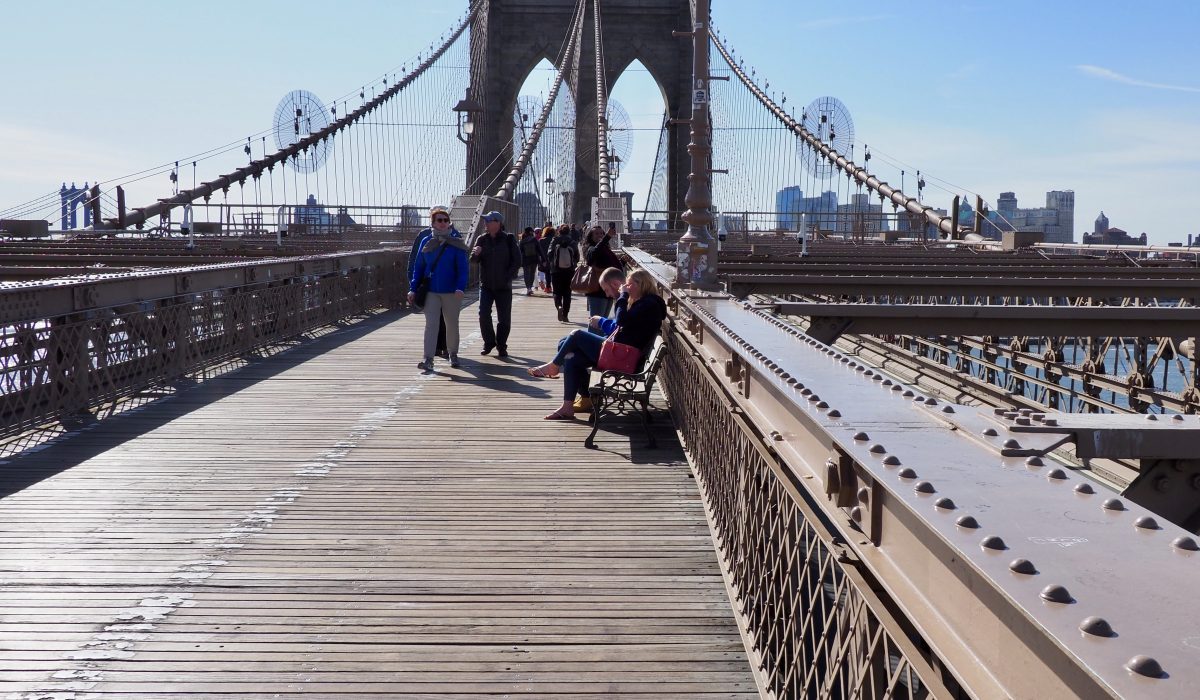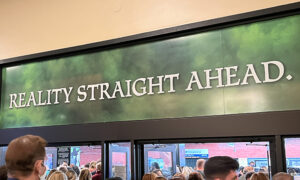
When I told a friend we had walked across the Brooklyn Bridge, he said, “Gosh, I didn’t know you could do that.”
Well, actually you can and some times there are too many people who want to take a hike across the 1.3 mile span between Manhattan and Brooklyn, the world’s first steel suspension bridge.
The New York Icon, completed in 1883, has recently joined the list of “Overtouristed” places in the world, meaning too many tourists. When too many tourists crowd a place, it becomes unpleasant and loses its authentic character.
I’ve read as many as 2,000 people an hour make their way across the Brooklyn Bridge’s narrow footpath, blocking the bike lanes and making it feel like a long line at Disney. No stopping, please.
Apparently the most popular time is at sunset. Makes sense. On average over 25,000 people walk across the bridge on weekends during the summer.

In April, after reading about the jammed walkway, we picked a week day morning around 8:30 am to make the trek. It was great. We only encountered a few adventuresome souls like us who happily strolled across the cultural icon, stopping for snaps both directions. It was a glorious blue sky day with fabulous city scape scenes.





Why would you want to walk across a bridge in an urban setting like this?
I liked the feeling of connection. Bridges link people. I like the actuality and the symbolism of connecting one body of land to another. It also feels good to have accomplished this feat. Not in a bucket list kind of way but more in fact, we figured out where to get to the bridge, made our way across and then found something interesting to do and see on the other side.
We particularly enjoyed the middle section of the Brooklyn Bridge where bronze plaques indicate what we were looking at along the sky line. It was a bit disconcerting to see one with the outline of the World Trade Center.

There were also signs explaining how the bridge was built. A large cage was erected under water for workers to work in making it possible to build the supports for this feat of human achievement.
It was designed by John A. Roebling, an engineer who’d made a fortune pioneering the manufacture of wire rope made of a new type of metal: steel.
Construction took 14 years and claimed 27 lives, the first being the Roebling himself. While surveying, his foot was crushed by a ferry and he died of tetanus. His son Washington Roebling took charge of the mammoth project.
While there were great dangers working from the heights of the towers and cabling, it was the river beneath that was most hazardous. Men toiling in submerged caissons to create the tower foundations (44.5 feet deep in Brooklyn and 78.5 feet deep in Manhattan) often suffered from decompression sickness (aka “the bends”). Roebling himself became paralyzed by the “disease.”
Funny fact: In 1884, to prove the bridge’s stability, P.T. Barnum paraded 21 elephants across the promenade. I wish I could have seen this.
At one time people put “locks” to profess their love on the bridge, but this is no longer allowed.
I loved seeing the people who enjoyed the walk like us. At the other end, we made our way to Park Slope where we enjoyed seeing lots of families in Brooklyn with gorgeous old row houses.


Here’s a link giving you all the information you need if you decide to take a hike on the Brooklyn Bridge.










Comments
2 CommentsRuth Butler
Jul 16, 2018Wonderful post! Such an iconic spot. On our first trip to San Francisco years ago, we walked the Golden Gate Bridge. It gave us a different sort of connection to the place, which you have expressed so well.
Susan J. Smith
Jul 16, 2018Thanks, Ruth, I appreciate your nice comment. I do understand that the Golden Gate Bridge is also having some issues with Overtourism. You’d probably want to time your walk if you were going now.